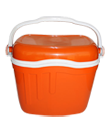Retained Earnings Journal Entry Example
During the accounting period, the company earns $50,000 in net income. After the accounting period ends, the company’s board of directors decides to pay out $20,000 in dividends to shareholders. If a company has no strong growth opportunities, investors would likely prefer to receive a dividend. Therefore, the company must balance declaring dividends and retained earnings for expansion.
Investors look at the current year’s and previous year’s retained earnings balance to predict future dividend payments and growth in the company’s share price. Net Profit or Net Loss in the retained earnings formula is the net profit or loss of the current accounting period. For instance, in the case of the yearly income statement and balance sheet, the net profit as calculated for the current accounting period would increase the balance of retained earnings. Similarly, in case http://simatic-s7-1200.ru/catalog/pidzhaki/zhenskiy_pidzhak_model_506/ your company incurs a net loss in the current accounting period, it would reduce the balance of retained earnings. Since all profits and losses flow through retained earnings, any change in the income statement item would impact the net profit/net loss part of the retained earnings formula. In terms of financial statements, you can find your retained earnings account (sometimes called Member Capital) on your balance sheet in the equity section, alongside shareholders’ equity.
Retained Earnings Formula: Definition, Formula, and Example
If an investor is looking at December’s financial reporting, they’re only seeing December’s net income. But retained earnings provides a longer view of how your business has earned, saved, and invested since day one. Also, keep in mind that the equation you use to get shareholders’ equity is the same you use to get your working capital. It’s a measure of the resources your small business has at its disposal to fund day-to-day operations. Retained are part of your total assets, though—so you’ll include them alongside your other liabilities if you use the equation above. Calculating retained earnings after a stock dividend involves a few extra steps to figure out the actual amount of dividends you’ll be distributing.
If your business is seasonal, like lawn care or snow removal, your retained earnings may fluctuate substantially from one quarter to the next. Therefore, the calculation may fail to deliver a complete picture of your finances. Essentially, this is a fancy term for “profit.” It’s the total income left over after you’ve deducted your business expenses from total revenue or sales. However, company owners can use them to buy new assets like equipment or inventory.
Everything You Need To Master Financial Modeling
It is useful to note that although the retained earnings account has a normal balance on the credit side, the company may have the debit balance of retained earnings instead. In this case, this debit balance of retained earnings will be presented as a negative in the balance sheet. In human terms, retained earnings are the portion of profits set aside to be reinvested in your business. In more practical terms, retained earnings are the profits your company has earned to date, less any dividends or other distributions paid to investors. Even if you don’t have any investors, it’s a valuable tool for understanding your business. From there, the company’s net income—the “bottom line” of the income statement—is added to the prior period balance.
All of the other options retain the earnings for use within the business, and such investments and funding activities constitute retained earnings. A high profit percentage eventually yields a large amount of retained earnings, subject to the two preceding points. Malia owns a small bookstore and wants to bring on an investor to help expand the shop to multiple locations.
Setting up a Statement of Retained Earnings
The retained earnings are calculated by adding net income to (or subtracting net losses from) the previous term’s retained earnings and then subtracting any net dividend(s) paid to the shareholders. One way to assess how successful a company is in using retained money is to look at a key factor called retained earnings to market value. It is calculated over a period of time (usually a couple of years) and assesses the change in stock price against the net earnings retained by the company. Profits give a lot of room to the business owner(s) or the company management to use the surplus money earned.
Instead, they invest this amount in expanding and growing the company, which slowly increases its overall value. When your business earns a surplus income, you have two alternatives. You can either distribute surplus income as dividends or reinvest the same as retained earnings. We can find the net income http://region-news.info/the-10-best-resources-for-14/ for the period at the end of the company’s income statement (consolidated statements of income). Strong financial and accounting acumen is required when assessing the financial potential of a company. Retained earnings provide a much clearer picture of your business’ financial health than net income can.
They can boost their production capacity, launch new products, and get new equipment. Or they can hire new sales representatives, perform share buybacks, and much more. http://www.vidon.ru/softportal/progr1875.html Are you unsure what this earning number represents and how to calculate it? You’ll learn to better understand and use retained earnings in your small business.








